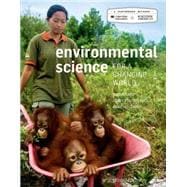Following real people and real science, Environmental Science for a Changing World provides a unique context for showing students how science works and how to think critically about environmental issues. Chapters don’t merely include interesting stories they are examples of science journalism at its best, combining Scientific American-style writing, layout, and graphics to tell compelling stories that exemplify important concepts and issues. This approach has proven so effective that instructors using the book report a dramatic increase in the number of students who read the assignments and come to class ready to participate.
This updated new edition features new stories, updated scientific coverage, and enhanced Infographics—the book’s signature visual study tool that combines memorable images, step-by-step callouts, and questions that foster scientific literacy. The book is organized into 11 chapters, each consisting of multiple modules focused on different aspects of environmental science, from ecology and evolution, to human interactions with the environment, to land, water, and energy resources. Although each module tells a compelling and relatable story, it is built on a core pedagogy of Guiding Questions that help students extract the scientific concepts that form the basis for the story. This edition also has its own dedicated version of Macmillan’s online course space, LaunchPad, which is filled with Video exercises, animations, graphing exercises, and assessments, including LearningCurve adaptive quizzing that help students apply the science, debunk misconceptions, and prepare for exams.








